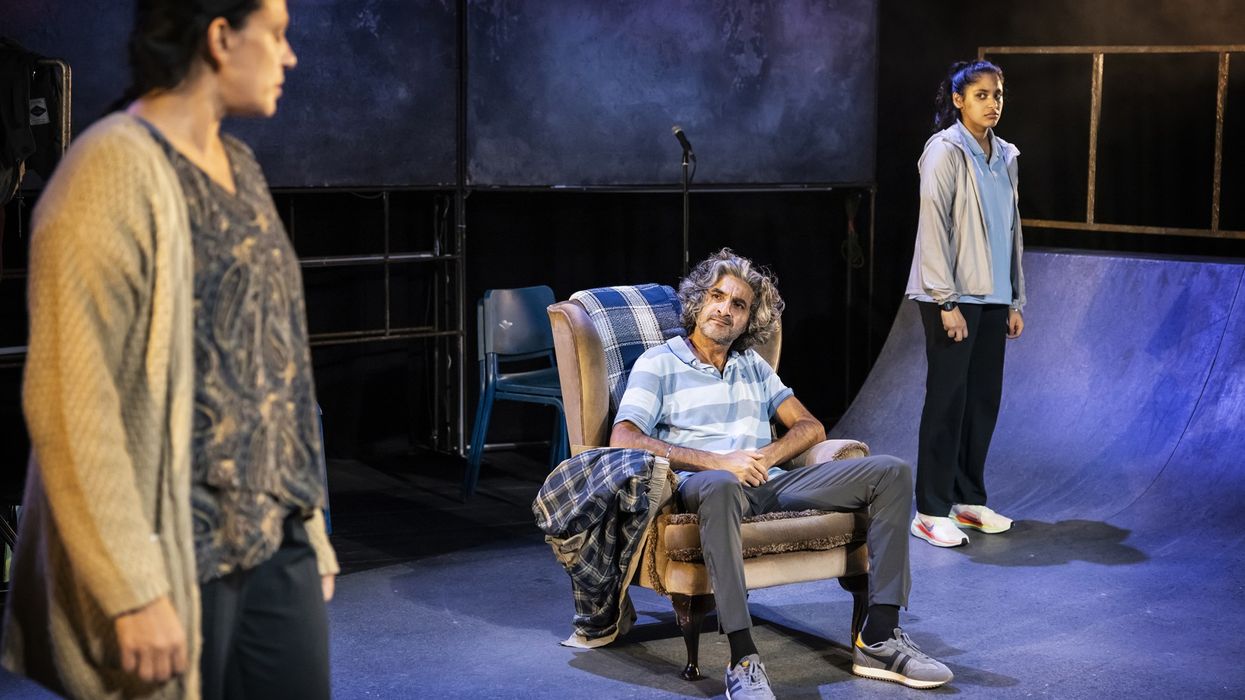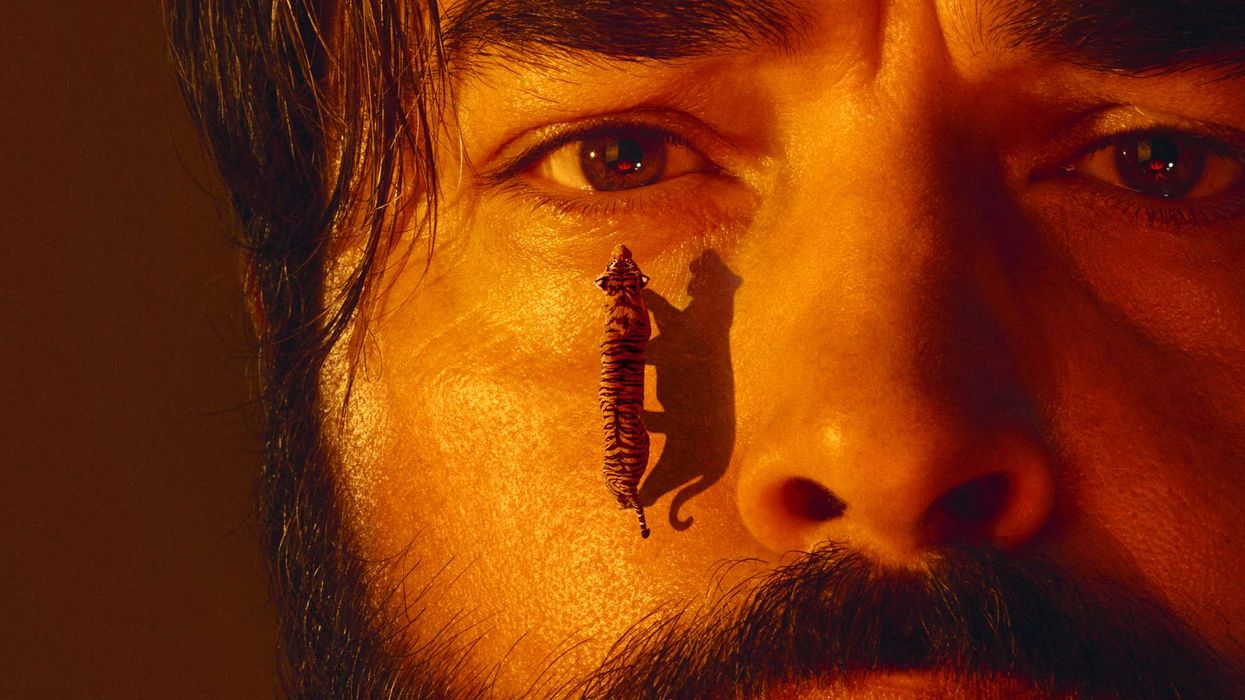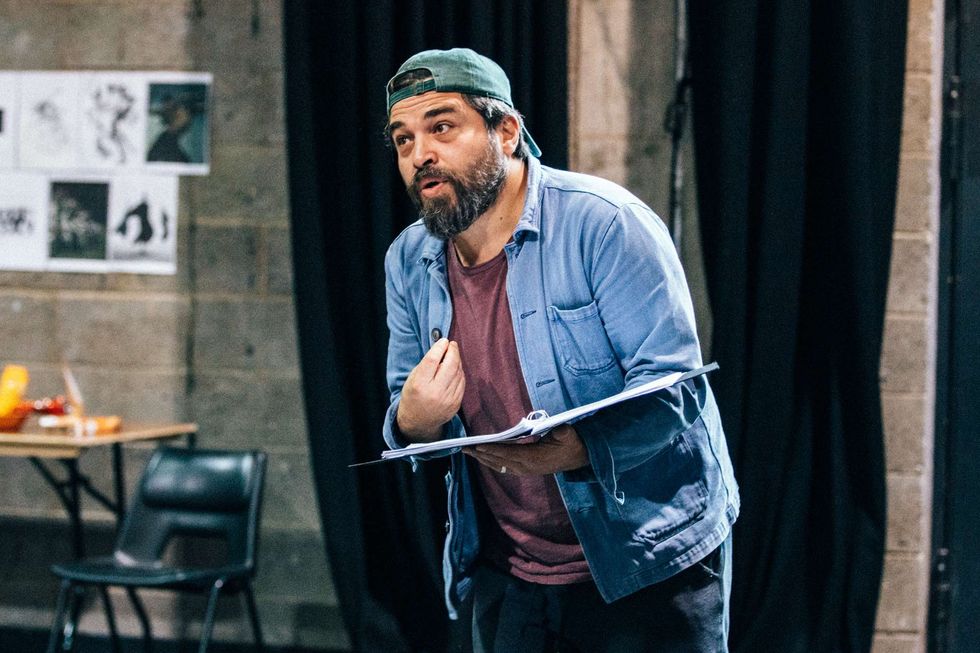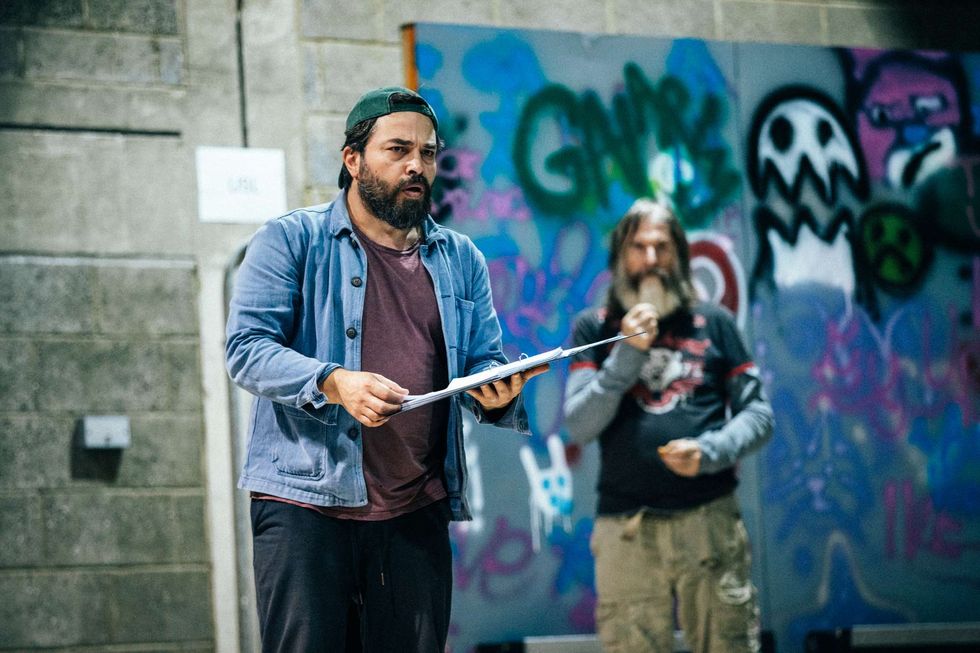AWARD-WINNING author Manjeet Mann is confident that the stage adaptation of her young adult novel Run, Rebel will offer different experiences to different audiences.
“The response has been positive, and we’re very pleased. This is the second tour for the show, as it toured last spring and did exceptionally well, which is why they brought it back for an autumn tour. That doesn’t always happen, so it’s a testament to the show, the actors, the director, and the story,” Mann told Eastern Eye ahead of the show’s national tour this week.
The show opened at Theatre Peckham in London last week. It had a short production run in 2023 and was produced by Pilot Theatre in co-production with Mercury Theatre Colchester, Belgrade Theatre Coventry, Derby Theatre, and York Theatre Royal.
“We’re all extremely happy about the return of the show. In terms of differences from last year’s production, it’s 99 per cent the same. However, the director, Tessa Walker, mentioned when Pilot Theatre decided to bring it back that there were a few things she would have liked to change. So, there have been some small changes, including a bit of a rewrite, and possibly some adjustments to the movement sections. The cast is almost entirely the same, with just one new actress playing Amber’s friend, Tara, as the previous actress wasn’t available. Everyone else has returned, and it’s special to have such a talented cast back,” said the novelist, playwright, and actress.
“Considering the tremendous response the show received previously, we’re excited to see what happens this time around.”
The multi-talented cast features Pushpinder Chani, Jessica Kaur, Simran Kular, and Kiran Raywilliams.
Stills from Run, RebelThough the show remains largely unchanged in terms of content, Mann wonders how new audiences in different cities will react. “Even though it’s the same show, the actors are now more embedded in their roles. Maybe this time, it’ll feel bigger, more special,” she said, clearly excited about what the tour might reveal as it continues across the country. “We’ll see if the audiences pick up on that.”
She added, “What am I expecting differently this time? Well, it’s going to different cities, so it’s going to be a different experience for different audiences.
“The show had just started its run in London, a city it hadn’t visited in its earlier tours, and already the feedback was overwhelmingly positive. I’ve been told we’ve been getting standing ovations, especially from large school groups, as it’s a show aimed at teenagers.”
“One thing my director, Tessa, always said was, ‘What works on the page doesn’t necessarily work on the stage,’” she shared. “In a book, you have the luxury of space, pages to expand on ideas. On stage, you’ve only got two hours to tell the same story,” Mann said when asked how she handled these sensitive subjects such as domestic violence, class issues, and importance of education when transitioning from book to stage.
Collaborative by nature, the author described the adaptation process as a team effort from the start. “When we first began, there wasn’t even a script,” she revealed. “We had the book, of course, but Tessa and I received Arts Council funding, which allowed us to bring actors into a room and improvise scenes based on the themes we wanted to show.” From there, it was a process of trial and error.
“We spent a week improvising, testing ideas, and seeing what worked and what didn’t. Then I wrote the first draft, and we went back to the actors again,” the British Asian writer said.
She stressed the importance of collaboration, admitting that while some writers work in isolation, she prefers to have many voices involved. “I need to see things first before I can write, so it really helps having actors play with the material. The whole process was incredibly collaborative,” she said.
When asked about the British Asian backdrop of the story, she acknowledged that while the characters are from this ethnic background, the themes transcend cultural boundaries.
“Yes, it’s set in a British Asian family, but the issues – domestic violence, alcoholism, friendship, love – these are universal,” she explained. “You don’t have to be from a particular ethnicity or class to connect with these experiences.”
She went on to explain her choice to centre the story around a strong British Asian character. “I could have easily written this with all white characters, but I wanted to see a strong Asian girl as the protagonist. We’re often portrayed as secondary characters, quiet and weak, but my main character is rebellious, strong, and complex. She’s not always likeable, but she learns from her mistakes.”
For the author, the goal was to provide representation she hadn’t seen growing up. “When I was a teenager, I never saw Asian girls represented like this, and that’s why I wanted to write her.” Despite her British-Asian identity, the author firmly believes that the struggles her protagonist faces are something everyone can relate to: “The themes are universal, no matter who you are or where you come from.”
When asked about future plans, she revealed that she is in the process of turning her 2021 book The Crossing into a play. She said the project is in its early stages and somewhat secretive. “Once the press release is out, I’ll be able to talk about it, but it’s definitely in the pipeline.”
In addition to her second book adaptation, the author is hard at work on her third book, set to be released next year.
“While Run, Rebel and The Crossing were set in England, my third book takes place in a Delhi private school,” she said. Although she didn’t share much details, she hinted that the new setting would bring something different to her storytelling.
The conversation soon turned to her fourth book, which she had already begun working on. “Once I send off my third book to the editor, I like to use that bit of free time to start on the next one,” she explained. Although still in the early phases, she is aiming for a release in 2026.
Despite her busy writing schedule, the author still makes time for acting. “I don’t do as much acting as I used to, simply because I don’t have the time,” she admitted. However, she’s finding joy in creating her own work and still takes on smaller acting projects when she can. “I do a lot of voiceover work, like audiobooks and commercials, which are great because they don’t take up too much time and can fit around my writing.” When asked if she always envisions her books as plays, she smiled and reflected on her dual career.
Manjeet Mann“I’m an actor, so I think I naturally write with an actor’s voice,” she said. “I see everything visually when I’m writing, so my books often lend themselves to the stage. People read them and say, ‘This would make a great play!’ But for my third book, I actually see it as more of a film – maybe one day, a film in India!”
The author’s multifaceted career continues to grow as she juggles writing books, adapting them for the stage, working on television scripts, and pursuing her acting projects.
“I know that the book was a huge success because readers from all backgrounds connected with it, not just girls, even though the main character is a girl. I’ve visited around 200 schools across the country in the past two years, speaking to students, and I’ve had boys and girls of all ethnicities come up to me and say, “I understand Amber. This is my story.” I’ve even seen young white boys holding the book and telling me, “I love it. She really speaks to me.” They might not have experienced everything Amber goes through, but they can relate to her desire to live their own lives and feeling small at times.”
In her opinion, Asian representation across the arts is slowly improving in the UK. However, not many minorities enter the arts, as many still gravitate towards traditional careers like doctors, accountants, or lawyers. But I think it’s improving, and despite the smaller pool of south Asian artists, there is progress, she said.
“As a south Asian performer and writer, I make it a point to support other south Asian creatives. If there’s a south Asian writer or performer, I’ll always try to see their play or read their book – it’s about supporting and representing our culture. We’re still a small group, but I believe we’re making our mark,” she said.
While narrating her own literary journey, she said, “It started with acting. I still act occasionally, but writing has taken over most of my time now. I’ve always wanted to be a storyteller, but I thought I’d be telling other people’s stories, not my own. From a young age, I was involved in drama – acting in school plays from the age of five all the way to 18. My parents probably thought it was just a phase, but I didn’t stop. I wanted to study performing arts at university, which was quite different from the typical career paths expected in many Asian families, but I was serious about it.
“After university, I moved to London, got an acting agent before I even graduated, and started working right away, mostly in theatre, with some TV, radio, and film roles. It was great, but in 2016, I started to feel frustrated with the types of roles I was being offered. They were often similar, stereotypical parts. At the time, roles for Asians or people of colour were still mainly given to white actors. Rather than waiting for someone else to give me my big break, I decided to take control and started writing.
“I wrote my first play in 2016, a oneperson show that I performed myself. I rented a small theatre in North London for three nights and invited everyone I could. To my surprise, people came, and the play was a success. I toured it for two years around the UK, which led to getting a writing agent and more commissions to write plays, as well as for TV and film. My career shifted towards writing, and eventually, in 2019, I got my first publishing deal and started writing books.
Mann added, “Taking control of my career changed everything for me. When I speak to students, I always tell them not to wait to be chosen. If you want something, go for it. It’s hard work, but it’s worth it. I often tell drama students not to just wait for their agents to call but to create their own work. Acting and writing can be disempowering if you let other people dictate your career, but if you take charge, you’ll feel empowered. Since I took control of my journey, my life has changed in amazing ways, and I wouldn’t change a thing.”
“My journey started as an actor, then I became a playwright, and now I’m an author. It’s been quite the adventure, and I’m excited for what’s next!,” she said.
Run, Rebel will tour to Leicester Curve Studio (Thursday (10)-Saturday (12)); Oxford Playhouse (next Wednesday (16)-next Saturday (19)); Leeds Playhouse (October 22-26); The Lowry Quays Theatre (October 29-November 2) and Traverse Theatre (November 7-9).






 Ammar says the play’s script itself served as a compass in navigating Musa’s divided psycheIsha Shah
Ammar says the play’s script itself served as a compass in navigating Musa’s divided psycheIsha Shah Bengal Tiger at the Baghdad Zoo runs at the Young Vic Theatre in London from December 2 – 31 January 31 2026Isha Shah
Bengal Tiger at the Baghdad Zoo runs at the Young Vic Theatre in London from December 2 – 31 January 31 2026Isha Shah






